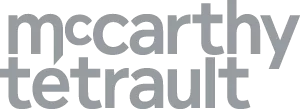- with readers working within the Construction & Engineering industries
- with Senior Company Executives, HR and Finance and Tax Executives
Effective July 1, 2025, the new version of A Guide to Canada's Export Control List ("the Guide") is now in force. This latest update formalizes significant new export and technology transfer controls, particularly affecting AI-enabled technologies, life sciences, advanced manufacturing, semiconductor technology, and defense-related sectors, and marks a notable shift in Canada's export control policy to the use of unilateral measures.
A Strategic Policy Shift: Rise of Unilateral Controls
Historically, Canada's export controls have been grounded in multilateral regimes such as the Wassenaar Arrangement, the Nuclear Suppliers Group, the Australia Group, and the Missile Technology Control Regime. However, more recently, Canada has been increasingly implementing controls which are unilateral in origin. These controls, first introduced inJuly 2024 and April 2025, are not required under any multilateral agreement and are being adopted independently by Canada to address national security and foreign policy concerns.
This marks a significant departure from Canada's traditional approach and aligns it with a broader trend among allies (notably the United States) to impose independent national controls on sensitive technologies, particularly those with potential military, surveillance, or dual-use applications.
Key Changes
The new Guide reflects the addition of a new item to Group 5 of the Export Control List ("ECL") - Item 5506 titled "Other Strategic Goods and Technology (All Destinations Other than the United States)". This category is being used by Canada to implement unilateral controls purported to protect Canada's economic or national security interests and includes the following:
- Technology for GAAFET structures (5506.2.b.ii)
- Quantum computers and cryogenic systems (5506.2.c.ii)
- EUV lithography masks and cryogenic wafer probing tools (5506.2.d.vi, 5506.2.d.vii, 5506.2.d.viii)
- Isotopically pure silicon and germanium (5506.2.e)
- Semiconductor manufacturing tools and materials (5506.2.d.iii)
In addition to minor textual changes which bring Canada into alignment with the 2024 versions of the multilateral export control regimes, the new Guide also includes the following additions:
- Sub-orbital military craft (2-10.j)
- Peptide synthesizers (7-12.11)
- Ultrasonic atomization equipment and powders (1-1.B.2, 1-1.C.2.c)
The following have been removed from control:
- Certain unmanned submersible vehicles (1-8.A.1.c.1.c).
Industries and Technologies Most Affected
These new export and technology transfer controls are particularly relevant for companies operating in the following areas:
- Semiconductors & Microelectronics such as: AAFET design files, EUV lithography masks, dry etching systems, cryogenic wafer probing stations, additive manufacturing tools
- Quantum Computing & Cryogenics such as: Quantum processor designs, dilution refrigerators, parametric amplifiers, quantum memory components
- Artificial Intelligence & Advanced Computing such as: AI accelerators, neuromorphic chips, HPC interconnects
- Aerospace & Defence such as: sub-orbital military platforms, dual-use navigation systems
- Life Sciences & Biotech such as: automated peptide synthesizers, synthesis protocols and software
- Advanced Manufacturing & Materials such as: isotopically enriched silicon-28 or germanium-76, ultrasonically atomized metal powders, nanoimprint lithography templates
Compliance Implications
It is important to note that, in addition to physical export shipments from Canada, these Canadian export controls apply to all forms of technology transfer, including:
- Server or cloud access
- Uploading/downloading controlled data
- Email and document sharing
- Virtual meetings, screen sharing, and video conferencing
- Verbal disclosures in meetings or training sessions
Further, even disclosures to foreign nationals in Canada may in some cases constitute a controlled export.
Recommended Compliance Steps
Those potentially impacted by these new export controls should ensure they are conducting a thorough review of their compliance procedures. As with any change in export and technology transfer controls, companies should consider each of the following.
- Reassess Product and Technology Classifications: Review all goods, software, services, and technical data against the updated Guide. Focus on R&D, AI, semiconductors, quantum, and dual-use technologies.
- Update Export Control Policies and Procedures: Revise your export management and compliance programs to reflect the new controls. Ensure procedures cover both physical and intangible transfers.
- Implement Technical Safeguards: Restrict access to controlled technology using role-based permissions, encryption, and geofencing. Monitor and log access to shared drives and cloud platforms.
- Enhance Employee Training: Provide targeted training to engineering, legal, IT, and business development teams. Emphasize that informal disclosures, such as during screen sharing, can trigger export obligations.
- Review Third-Party Relationships: Reassess vendor, partner, and customer engagements for export control exposure. Include export control clauses in contracts and non-disclosure agreements where applicable.
- Apply for Permits Where Required: Use the NEXCOL system to apply for any required export permits for newly controlled items. Engage with Global Affairs Canada early for classification guidance or advisory opinions.
- Monitor for Further Developments: We expect Canada to continue to expand its use of unilateral controls. Stay informed through official bulletins and legal updates.
To view the original article click here
The content of this article is intended to provide a general guide to the subject matter. Specialist advice should be sought about your specific circumstances.




